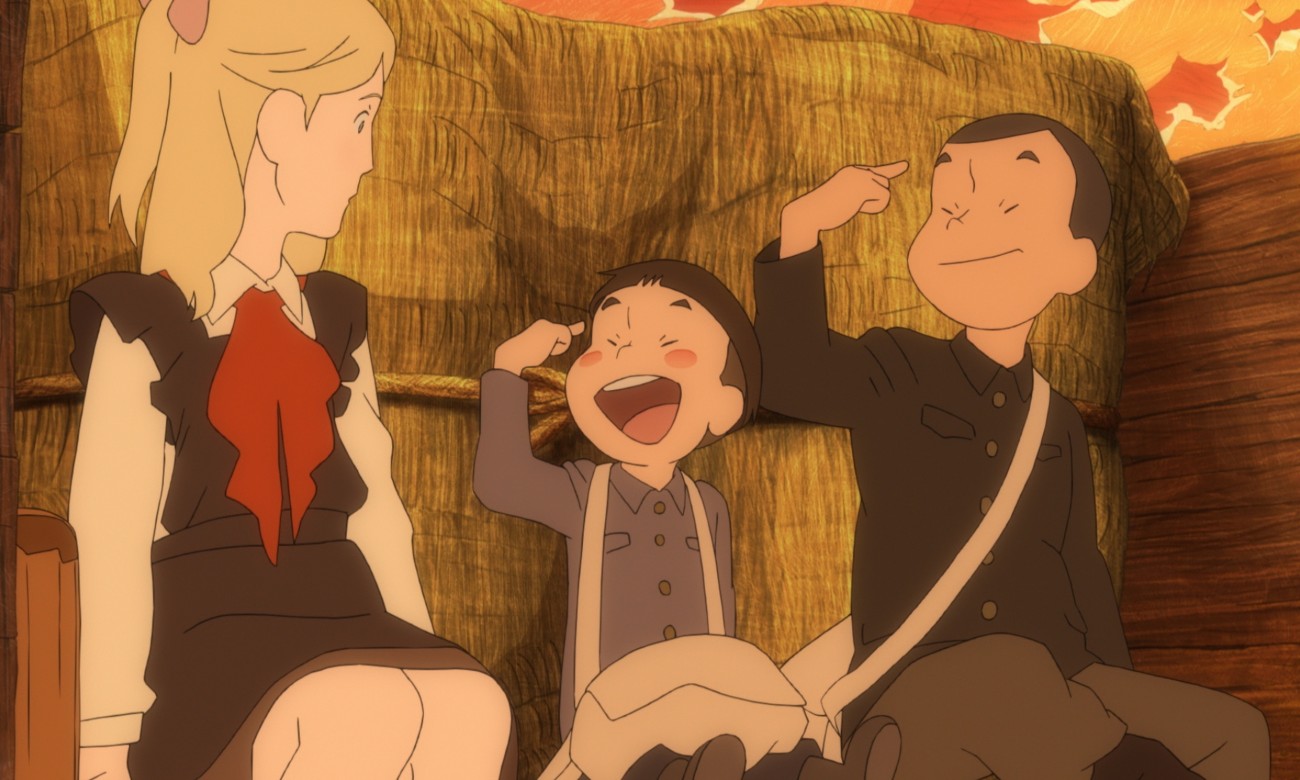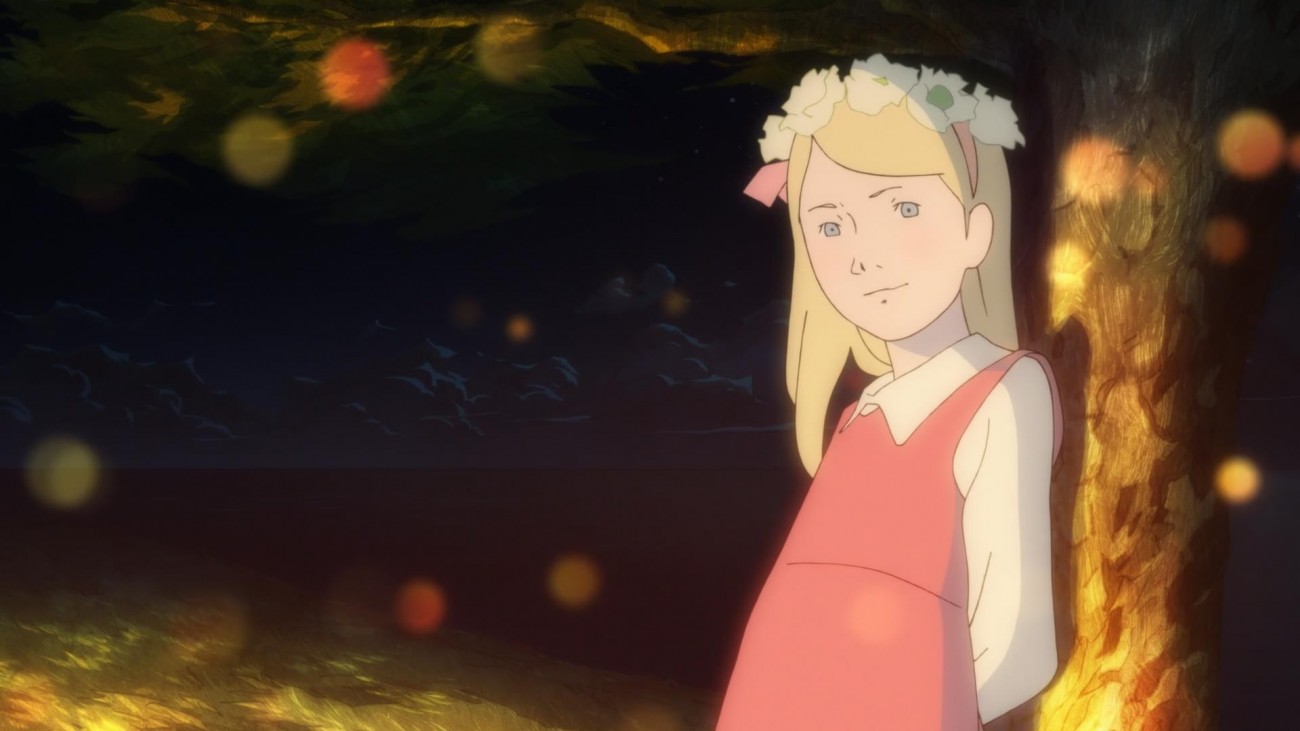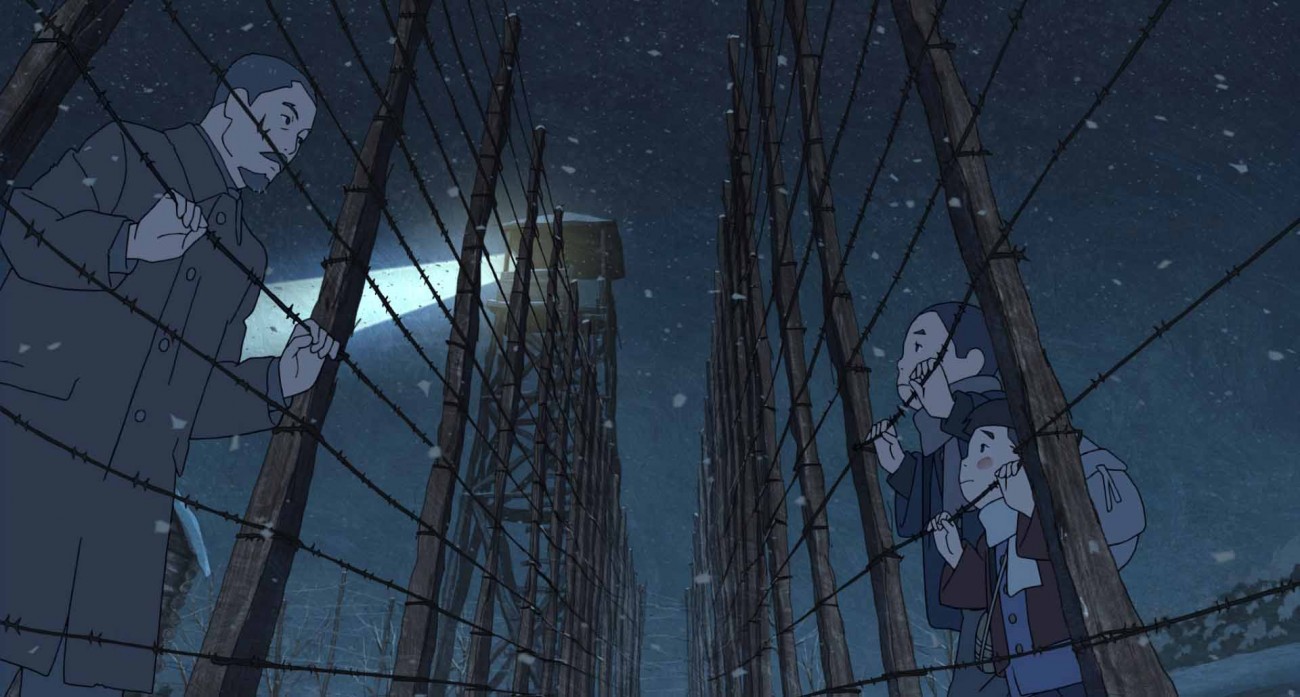Night on the Galactic Railroad by Kenji Miyazawa is a classic Japanese novel that has much to bear on the story told in Mizuho Nishikubo’s animated drama Giovanni’s Island. In Miyazawa’s novel, written in the late 1920s, two young boys by the names of Giovanni and Campanella travel on a train across the universe through the constellations of the Milky Way and have fantastic adventures. It is only at the close of the novel where it is revealed that the train journey has been an imaginative way for Giovanni to process the fact that Campanella, while attempting to save a schoolmate who fell into a river, has drowned and passed away; the Galactic Railroad is a metaphor for heaven and the afterlife.
This story reflects and refracts in many ways on the characters of Giovanni’s Island. Protagonist Junpei’s father is obsessed with the book and named his sons after the characters – Junpei for Giovanni, and his little brother Kanta for Campanella. As a result Junpei and Kanta love trains, and in their sleepy village on the island of Shikotan in the year 1945 they imagine great engines and the journeys one could take on them across space and time.

But Shikotan is about to be rudely awoken – Japan has just lost the war, and Shikotan is part of the Kuril Islands, a site of deep-seated land disputes between Japan and Russia, and with the Soviet Union’s last gasp declaration of war on Japan, the ‘Ruskies’ find cause to land troops on Shikotan and occupy the island.
We largely see the occupation through the eyes of the children of the island, first in the terrifying arrival incident where armed Soviet soldiers storm the school, then in slowly isolating pockets of increasing deprivation: Junpei’s family are relegated to living in the stable, their house proper given over to the Soviet commander; the children at the school are herded into the one classroom so the Russian children of the soldiers can have the superior room for their lessons; and food shortages among the Japanese villagers begin to gnaw.

Yet children tend to find a way to reach commonality, and Junpei and Kanta strike up a friendship with the commander’s daughter, Tanya. This is the most touching portion of the film, as the children naturally connect despite their lack of a common language and their differing backgrounds. Inevitably, however, adult circumstances wedge divisions, and ultimately in Junpei and Kanta’s future lies deportation, hunger, and tragedy.
There will be plenty of comparisons drawn between Giovanni’s Island and Studio Ghibli’s classic WWII film Grave of the Fireflies, and they are not misplaced (not least because together they would make the very saddest children’s-experiences-of-war double ever and cause every skerrick of moisture in your body to exit via your face). At its simplest they are complementary points along a spectrum on a similar theme; while Grave of the Fireflies is concerned with the experiences of children during war, Giovanni’s Island sees them dealing with the aftermath of consequences for being on the losing side.

Neither film pulls its punches – Giovanni’s Island is not a film for the faint-hearted, or those who find it difficult to handle seeing children deal with hardship and death. The fact the film is animated does nothing to lessen this impact. Indeed the sequences involving the children’s imaginings of Miyazawa’s Galactic Railroad have some of the biggest emotional heft, as their fantastical dreaming all the most starkly illustrates the childhood they are being robbed of. It is a masterful and devastating piece of animation that deserves to be spoken of alongside such a classic as Grave of the Fireflies, even if having seen the latter takes some wind of expectation out of the former’s sails.
The Kuril Islands, including Shikotan, are still part of the Russian Federation today. Japan is still pushing for the disputed territory to be returned to them, to say nothing of the protests of the indigenous Ainu peoples, whose claim of ownership goes far beyond the first nineteenth century settlements of both Japan and Russia. While the ending of Giovanni’s Island is one of personal reconciliation, the real world wounds of this ongoing conflict continue to fester.
Giovanni’s Island is now available to own on DVD and Blu-ray thanks to Madman Entertainment.
